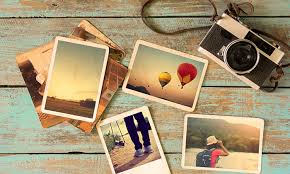Psychology of Colors
Do you feel anxious in a yellow room?
Does the color blue make you feel calm and relaxed?
“Colors, like features, follow the changes of the emotions,” the artist Pablo Picasso once remarked.
Why is color such a powerful force in our lives?
What effects can it have on our bodies and minds?
Colors carry such a strong connection with a person’s well-being that there is such thing as “Color Therapy”. This process has been around for ages. In ancient Egypt, Greece and China color therapy played an important role in medical practices. “Color halls” were used to treat and heal people. These were rooms that were each painted different colors in an attempt to treat sickness. Color therapy at the core is all about understanding the power of color caries and connecting particular colors to a person’s life to assist with mental, physical, and emotional ailments.
Color is critical to creating attractiveness or repulsiveness. In today’s society, both genders use color to enhance their visual and aesthetic appearance. The use of color has become an important expression of who we are, how we feel, and what we believe. Emotions can take dominance of the colors we choose. The colors in garments can also transform emotions. The lesser-known fact here is, according to speculated data, 86% of consumers believe that color is the essential factor while buying a garment or a product. It takes only 92 seconds for a product to create an impression. Colors in fashion have a similar effect when you want to change your mood or send off a specific message with your garments. From femininity and masculinity to emotions and cravings, colors have the power to evoke every type of feeling.
While perceptions of color are somewhat subjective, there are some color effects that have universal meaning. Different colors have different cultural significance. Purple, for example, is a color of mourning in Thailand. In Western culture, however, it is associated with royalty, luxury, wealth, and sometimes magic. In Western cultures black is a colour of mourning; in Japan, however, it is a color of honor with white as the colour of mourning.
Color psychology is the psychological influence of colours on the functioning of a person. In simpler words, color psychology can be defined as the study of hues as a determinant of human behavior. There are a lot of things that colors affect. This includes perception, moods, nature, etc. Color psychology is controlled by numerous different factors, such as gender, age, and culture. For ages, it is being utilized in marketing to help impact consumers’ perception of goods and instill brands with personality traits. Colors have the power to make us feel emotions, and it’s truly fascinating! There is psychology in how we perceive colors and it’s used everywhere, from interior design to advertising, and yes, you can use it to your advantage in how you dress! It’s true, colors can affect our spending habits, appetite, stress level, and more.
We can learn to choose our clothing depending on the specific message we want to send or the mood we want to set while we define the colours that best suit our personality or our state of being on any given day. Psychological effects can be tied to hue characteristics. The temperature of a hue, the space from which it is viewed, and the color combination used to create it can influence perception.
“What you wear makes suggestions about your moods, your aspirations, and your attention to detail,” Dijanna says. “To send the right messages, you need to be sure of who your audience is and exactly what you want your personal style to say.”
“Classy is the original black they say.”According to a survey, maximum people singled out the color black as the leader in confidence, intelligence, and elegance. Blue provides a sense of authority and power.
Wearing dark blue is ideal for meetings conference public speaking gigs. This color is a worldwide favorite for good reason. Dark blue represents trust, authority, and stability (consider the fact that most police uniforms around the world are blue). “Lighter shades of blue suggest creativity and open-mindedness,”.
Yellow is an optimistic and energetic color that is suitable for parties and creative, relaxed events.
Red is the boldest of all colours. From confidence to danger, red sends out a wide range of emotions. This color inspires action, whether it’s passion or rage. A pop of red will get your attention and say you are a go-getter, but you should avoid wearing too much red as it can come across as aggressive.
Feeling powerful is a personal thing so I wouldn’t say that any color from my color palette would be or rather can be your color of power. It will be you and only you who would be deciding which color stands for you. We all have a color preference and that makes us stand in front of the mirror and say: “Woh kaun hai jisne dubara mud kar poo ko nai dekha…”
I hope you find your power color; wear it, feel it, and own it!
Priya Prasad
INIFD Siliguri



